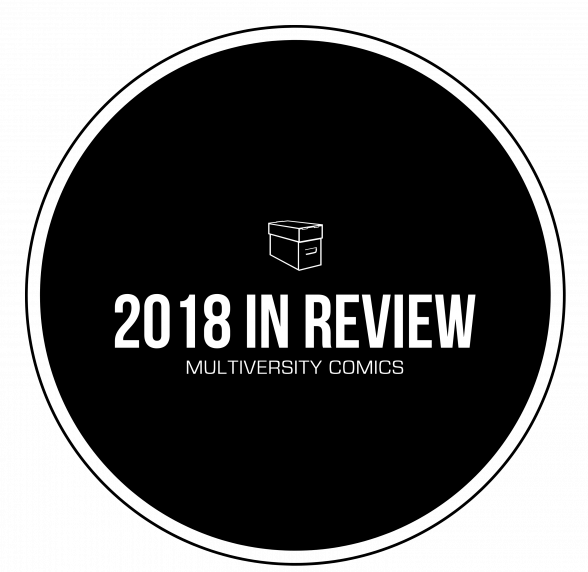
The one shot, as we define it, is a a stand alone issue, not part of an ongoing series, that tells a stand-alone tale or, in two of the seven cases below, expand on a story point in a longer, more self-contained fashion. Let’s get on with the list:
5. The Mighty Thor: Gates of Valhalla #1
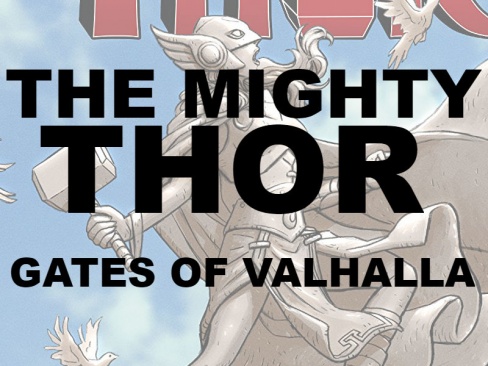
Jason Aaron is entering the last leg of his “Thor” epic which began in 2012 with the “Thor: God of Thunder” with and is set to end with next spring’s big “War of the Realms.” This year Aaron transitioned main characters, ending Jane Foster’s run as the primary focus of the book with the end of “The Mighty Thor” with #706 in April, and putting Odinson back in the forefront with the new “Thor” ongoing which began with a new #1 in June. Aaron ended his collaboration with Russell Dauterman on the Jane-Thor story, revealed that the two are coming back for “War of the Realms” next year, and picked up a new co-conspirator in Mike del Mundo.
In the middle of all this though was the critical, pivot of a one-shot: “The Mighty Thor: At the Gates of Valhalla” #1. This one-shot contained two separate stories, one that helped close the chapter on Jane’s narrative that was drawn by one of our 2018 Breakout Artists Jen Bartel, and the other that put Malekith back in the spotlight and that drawn by Ramón Pérez. Both were colored beautifully by Matt Wilson, lettered by Joe Sabino, and had a cover by our 2018 Best Cover Artist Nick Derington. All in all, this was quite an impressive transitional chapter.
The Aaron/Bartel told the story of the Future King Thor’s granddaughters the Goddesses of Thunder, who travel back and forward in time to meet a bunch of Thor’s. Not only did it pick back up on one of the most important aspects of Aaron’s “Thor: God of Thunder” plot points, but it allowed the three Thors to meet Jane Foster as she resumed her cancer treatment in what was a heartfelt, encouraging and touching moment. It also assured the audience, that when the war comes, Jane will have a role to play. It both closed her chapter for now, but assured us she’s coming back. Bartel draws the hell out of this half of the issue in some of her first interior work, crafting wonderful, fantasy settings, and sexy, smart powerful women. It was a wonderful transition from the sleek work of Dauterman in the prior issue.
The Aaron/Pérez was far darker, more creepy, and much more akin to the del Mundo art that was coming next month. This story centered around Malekith returning to Svartalfheim, his home, to torment his people in their poverty, force them to cannibalism, and gloat about how he is winning the war since the Bifrost has been destroyed with Asgardia along with it. It’s a chilling chapter bathed in creepy and depressive purples and blues by Wilson that fit the tone. This was the first piece to tease the “War of the Realms” and what was coming. It builds up Malekith as an imposing force after transitioning him to a background character for the middle and end of “The Mighty Thor.” The war is coming, and no one can stop it, and I don’t want to because this story promises its going to be epic.
Aaron’s “Thor” is six years in the making, and seems to be ending in its seventh next year. This chapter marked that the end is nigh. This one-shot both showcased some of the best work of 2018, and foreshadowed that 2019 is going to be a helluva year in comicdom. – Kevin Gregory
4. The Superior Octopus #1
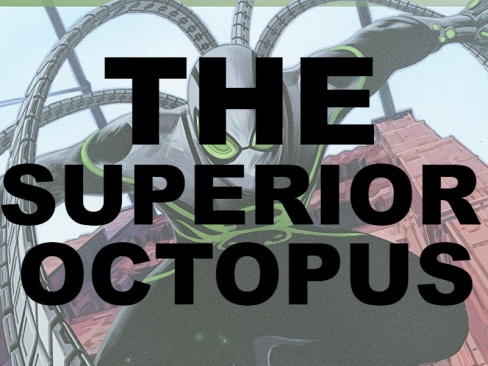
I’ll be honest, when I saw that “The Superior Octopus” had been announced, I was thrilled. It seemed like Marvel was finally, after several tie-in event appearances, bringing back Otto in his superior form for good. Then I found out it was just a one-shot. Huh. That kinda sucks. Oh, and it’s a tie-in to ‘Spider-Geddon.’ Of course it is. With the story once again not entirely stand-alone, the issue seemed destined to be caught up in the larger scheme of things. But I am incredibly pleased to say that I was wrong.
Continued belowWith “The Superior Octopus,” Christos Gage and Mike Hawthorne have created a triumphant return for Otto. He may be living under his new alias, Elliot Tolliver, but that doesn’t change anything; he is still just as arrogant as ever, but equally committed to fighting crime in the most superior way possible. With this issue, Christos Gage takes control of the character and manages to juggle several threads very well: he introduces Otto/Elliot’s new henchman, establishes Elliot’s relationship with Anna Maria Marconi, addresses the Hydra hangover that comes with his position as the Superior Octopus, all the while preparing for ‘Spider-Geddon.’
Now that might sound like a lot – surely the comic will struggle with that? Wrong. The comic is a whirlwind, but the artwork, a combined effort of Mike Hawthorne, Wade von Gaawbadger and Jordie Bellaire, does a good job of keeping things clear and simple. The panels mostly keep things at a medium distance, giving width so that multiple characters can fit in them, but equally, it gives the action sequences energy too. With Otto able to work on a large scale with his four robotic arms, it makes sense that we can see him dealing with the “dolts” in his way at a distance. Moreover, it does give him a sense of superiority, he’s ready for anything and everything and so no one can get close to touching him.
Following the main events of the issue, we get ‘Check-In,’ a short story that does a good job of connecting “The Superior Octopus” to the ‘Spider-Geddon.’ It reveals the impending threat of the Inheritors return via the cloning engine that Otto has just used. Dun. Dun. Duuuun.
All in all, this issue is rightfully included amongst the best one-shots of 2018 because not only does it bring back a popular character, but, in the more than capable hands of the creative team, establishes an intriguing status quo ready for the much anticipated revival of “Superior Spider-Man,” as well as serving as a prologue for ‘Spider-Geddon.’
3. Dark Knights Rising: The Wild Hunt (tie)

With myriad writers, illustrators, and colorists, “Dark Knights Rising: The Wild Hunt” acts as both a one-shot comic and an essential piece of the ‘Dark Nights: Metal’ event of 2017 and 2018.
Calling “Dark Knights Rising: The Wild Hunt” a one-shot comic seems disingenuous in and of itself, as it only really is one in terms of being the only issue under its name. While each individual issue of the one-shots introducing the various Dark Knights was relatively self-contained, here Scott Snyder, Grant Morrison, James Tynion IV, and Joshua Williamson come together with the intent of both following up on the events from the small crossovers ‘Gotham Resistance’ and ‘Bats out of Hell’ and leading from the penultimate issue of the main “Dark Nights: Metal” series to its finale. Whereas the different arcs seemed to be still separated out to a wide degree before, here they are consolidated at last, as if through a funnel toward “Dark Nights: Metal” #6.
That said, there is more to the writing than merely putting the pieces together. By forcing the Knights to work together for more or less the duration of the story, the writing team allows for character development within and without the members, as well as adding more of an air of tragedy to them in some cases as readers are made aware that many of them are only starting to realize that their mission is morally wrong. Furthermore, Morrison’s influence is clear in the talk of the musical vibrations of the multiverse and the utilization of many different universes in cameo appearances. While the villains each show how immoral or tragic they can be, the heroes are given time to shine as well, ranging from Cyborg to Raven to the Flash to Detective Chimp, to name but a few. Furthermore, this issue helps to begin to further fundamentally alter the very fabric of the DC multiverse with the inclusion of the not-so-damned, rather clean apes of Earth 53. All of these developments are bound into intense emotional beats for both the heroes and the villains, from rising triumph to wallowing tragedy to descending horror and even more besides.
Continued belowThe artwork presented is nothing to sneeze at either. Howard Porter, Jorge Jimenez, and Doug Mahnke work together with the colors provided by Hi-Fi, Alejandro Sanchez, and Wil Quintana to develop phenomenal, highly dynamic pieces that focus in on intricate facial structures and highly varied perspectives. For example chaotic paneling shows the fight against the Dark Knights and how it thereby impacts the entire DC multiverse on different worlds. The colors are bright or dark depending on the scenario, with the inclusion of a blood red sky over the vampire Earth 43, the brightness of the gold of certain elements to show its heroic connotations, and varied, psychedelic backgrounds to show how bizarre the Bleed can be. – Greg Ellner
3. Dazzler (tie)
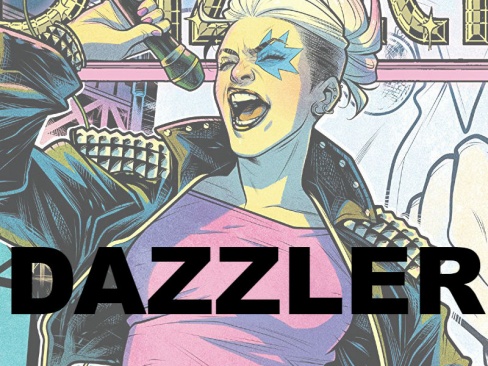
No matter their personal beliefs, large groups of people can get along because of a mutual interest. But what if factions arise within the community and threaten its unity?
Magdalene Visaggio and Laura Braga brilliantly explore this issue by recasting Dazzler — just Alison now — as the lead singer of an underground rock band. She isn’t interested in superheroing, nor is she interested in fame. She just wants to express herself and help unify the polarized mutant and inhuman communities. It’s the perfect recasting of the character, digging into her musical roots in a way that feels so completely of-the-moment but with a timeless message.
The parallels to the real world are at times obvious and at other times unclear, which helps the timely-yet-timeless nature of the story. As anyone living in the country can tell you, America today is highly politically polarized, and extremists frequently get more airtime than they should. That’s all reflected here, with the Inhumans-versus-mutants concept, yet neither is a direct analogue for any belief system. Visaggio is therefore able to address the core of the issue: it’s okay to be who you are, unless your beliefs directly affect other people’s happiness. Not much time is spent dwelling on the philosophies of either side, but we do nonetheless understand the impacts on the story’s central pair of Inhumans: Just as they feel free to enjoy themselves without fear, the anti-Inhuman mutants almost bully them into not attending shows.
There’s a certain nuance in the depiction of these issues. Alison even says that she can see how the anti-Inhuman belief systems were formed, but then clarifies that that didn’t make them right. The one-shot also has an interesting undercurrent that questions the need for different minorities to claim they are more oppressed than others, and the conflicts that arise from that. Ultimately, we don’t get any solid answers, nor should we. As Alison expresses, if you can get together and enjoy some music without harming others, it’s okay to be whoever you are.
It’s not all serious and thematic, though. At one point, Alison has her friends sing so she can recharge her sparkling light powers, and there are other fun little interactions that make the issue an overall positive experience. On art, Laura Braga and colorist Rachelle Rosenberg create a vibrant, realistic music scene with all the locations and fashions that go along with it. They also do a great job conveying the body language of people enjoying themselves, along with depicting Alison’s unique power set as thick beams and splashes of light.
On the whole, Visaggio, Braga, and the rest of the team clearly entered this issue with a single goal, and they achieved it masterfully by the end. This is the perfect example of how to update a character for contemporary audiences. – Nick Palmieri
2. Nuclear Winter Special

DC has taken to releasing a few of these style anthologies a year, and of all they’ve released in the past few, “Nuclear Winter Special” was the best of the bunch. All of the stories take place in a post-apocalyptic world, and so the creators have free reign to be as over the top and weird as they like. Three of the stories focus on DC characters set in the future: Kamandi, Superman One Million, and Batman 666. Those stories, aside from the Kamandi one, bring new wrinkles to those characters, and are really satisfying.
But there are also some really heartwarming stories, including a Firestorm story illustrated by Jerry Ordway, and a Supergirl story written by Tom Taylor that rank among the best superhero stories of the year. These anthologies aren’t always a great read, but “Nuclear Winter Special” shows what good creators, given a lot of freedom, can do with these characters.
Continued below– Brian Salvatore
1. Swamp Thing Winter Special (tie)

When looking back at the various one-shots of 2018, the first one that came to mind was the 2018 Swamp Thing Winter Special. Having lost both Len Wein and Bernie Wrightson, the creators of ol’ Swampy and masters of their crafts, in 2017; this issue was a poignant and perfectly timed send off for them. And what better way to posthumously honor these legends of the comic book medium than by including both a high quality new story from a modern day master that impeccably encapsulates what makes Swamp Thing such a long-beloved character, along with a never-published story from Len Wein?
The featured story, ‘The Talk of the Saints’ is written by Tom King with gorgeous and haunting art by Jason Fabok. A heavy and foreboding tale, we follow Swamp Thing through snow-covered lands as he protects a small child from an unseen creature that is causing the blizzard. King crafts a disturbing story of loss; specifically the loss of one’s strength. As the creature chips away at both his mind and body, Swamp Thing fights one of his hardest battles: to maintain his humanity in the face of the toughest odds. Fabok’s skills are in full display making for one of the best looking “Swamp Thing” comics to ever hit shelves. His eye for detail not only for Swampy (he’s rarely looked better), but for each character and set piece is astounding. His work tells the story just as much as King’s script, allowing for total comprehension even if the text were stripped away. Brad Anderson’s color completes the tone of the story. Focusing on the shades of gray, brown, and deep blacks in each panel add to the unwelcome solitude of the tale. Occasionally coming up for air with the dulled greens, bloody reds, and burning orange injected into various panels to breathe hope and life back into the bleakness. Heartbreaking and unsettling, this story will stick with you for days. It is one of the single best horror stories of 2018.
Closing out the 80 page special is the unfinished story, ‘Spring Awakening,’ from Len Wein. It was meant to be both a continuation of the 2016 miniseries “Swamp Thing: The Dead Don’t Sleep” and the premiere issue of a whole new series. Unfortunately with Wein’s passing, that series will never come to be. While he was able to complete the script layout, the text boxes were never completed. So what we get is a text-less issue with Kelley Jones’s excellent artwork. A testament to Wein’s planning and Jones’s talent, like the previous story, dialogue isn’t completely necessary to understand the whole story. Along with Jones’s illustrations, Michelle Madsen’s colors, marked with dark and over-bearing shadows take the character back to his origins. I have always considered Kelley Jones to be Bernie Wrightson 2.0 anyway so who better to bring the legacy full circle in Bernie’s absence?
Loss and timing are key elements in both stories housed in these pages and that could not be more fitting for the real-life events surrounding its creation and publication, but even stepping away from that, the 2018 “Swamp Thing” Winter Special is an outstanding achievement in the medium and should be recognized as such. – Christopher Egan
1. Wytches: Bad Egg Halloween Special (tie)
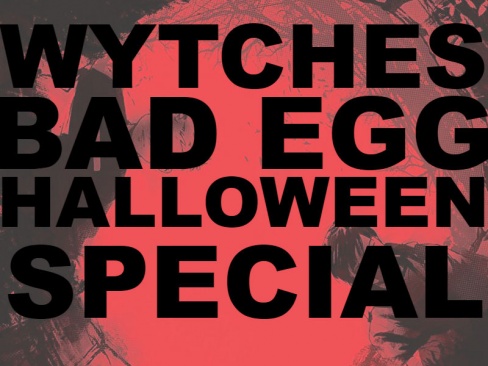
It’s been a long wait for the world of “Wytches” to come back. No doubt fans were scratching their heads when “Wytches: Bad Egg Halloween Special” was announced and it turned out to be . . . a prequel? With no mention of Sailor and her family and what’s been going on with them since the final issue dropped in May 2015? Is this how patience is rewarded?
There’s one thing you need to know about Scott Snyder: he likes to play the long game. He’s perfected this tactic in “Justice League” and planted the seeds for it in “Wytches” so it’s no surprise this one-shot follows in that tradition. And that’s what makes it so brilliant.
The original “Bad Egg” chapters were apart of the now defunct “Image+” magazine, and no doubt the serialization helped build the tension – – but you don’t see how the pieces from those installments tie together, until you read this one-shot. It isn’t until the very end of “Bad Egg,” in a panel that you can almost blink and miss, the connection between it and the first volume of “Wytches” reveals itself, setting up the second arc of this story (itself due sometime next year). What this one-shot does well is world-building: not only introducing the world of Wytches to those new to the series, but building on the first volume with knowledge of different types of Wytches, the conflict between Wytches and the hunters, all packaged into a story of star-crossed friendship that will break your heart. Again, that long game at play, with an underlying universal theme that anyone can understand and appreciate.
Continued belowBut don’t just focus on what game board and pieces Snyder sets up for Act 2; take your time to look at the artwork. Jock shows how and why he is the master of the close-up (just as he was in the original series). Take a look at a facial expression or eyes in close-up and you’ll know all you need to know about the sentiment of the moment in his simple line strokes. There’s just enough detail for the eye to put scene and shape together into a cohesive moment, but enough left out that the mind can draw its own interpretations and conclusions. If true horror is that of what is unknown, Jock’s art provides that beautifully.
The opening pages of “Bad Egg” introduce the reader to the term “standard issue,” a theme that carries through the entire one-shot. “Standard issue” refers that which is basic, ordinary, standard, not special. For our main character Sebastian, he recognizes at a young age how his life is anything but standard issue. The same can be said for “Wytches: Bad Egg Halloween Special.” – Kate Kosturski
Editors’ Notes:
Brian: These one shots represent something I think can often be lost in modern superhero comics: fun! Even when the subject matter is dark, these one-shots allow creators to take risks, go outside their comfort zones, or tell stories in a different way than they are used to. While there aren’t exactly going to change the world, they represent a type of comic that I wish was more prevalent in the mainstream.
Matt: I agree with you. I also think they allow the creators to try things that aren’t necessarily stuck toward some continuity. I think the done-in-one nature of these things is exactly what the superhero medium needs more of. Less giant events, less drawn out and contradictory serializations, and more straight storytelling.






